Descripción
SENSOR PULSO LATIDOS CON DIBUJO DE CORAZON
El sensor funciona con un sensor de ritmo cardiaco óptico, una etapa de amplificación y un filtro para el ruido, lo cual hace que su señal de salida sea confiable y estable. El consumo de corriente es bajo siendo de 4mA con una alimentación de 5V.
Para su funcionamiento solo debes de poner en contacto el sensor con tu cuerpo, alimentarlo de 3V a 5V y ya estas listos para tomar las medidas de tu ritmo cardiaco.
El cable de 60cm tiene conectores macho para que sea fácil su conexión a un protoboard o una placa específica, no es necesaria ninguna soldadura. Dimensiones: 19mm diámetro y 3mm grueso.
Es un dispositivo de plug-and-play para tu Arduino. Puede ser usado por cualquiera con básicos conocimientos de electrónica, si puedes conectar un encoder entonces puedes conectar este sensor. Adicionalmente te damos códigos de ejemplos e información muy valiosa para que logres ponerlo a funcionar en el menor tiempo posible.
Voltaje de alimentación: 3 V a 5 V
Bajo consumo de energía: 4 mA
Medición: Pulso cardíaco
Número de cables: 3
Largo de cables: 18 cm
Diámetro sensor: 1.5 cm
Modelo: XD-58C
Diagrama Arduino
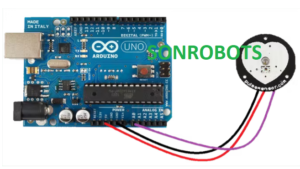
Código Arduino
/*
THIS PROGRAM WORKS WITH PulseSensorAmped_Arduino ARDUINO CODE
THE PULSE DATA WINDOW IS SCALEABLE WITH SCROLLBAR AT BOTTOM OF SCREEN
PRESS ‘S’ OR ‘s’ KEY TO SAVE A PICTURE OF THE SCREEN IN SKETCH FOLDER (.jpg)
PRESS ‘R’ OR ‘r’ KEY TO RESET THE DATA TRACES
MADE BY JOEL MURPHY AUGUST, 2012
UPDATED BY JOEL MURPHY SUMMER 2016 WITH SERIAL PORT LOCATOR TOOL
UPDATED BY JOEL MURPHY WINTER 2017 WITH IMPROVED SERIAL PORT SELECTOR TOOL
THIS CODE PROVIDED AS IS, WITH NO CLAIMS OF FUNCTIONALITY OR EVEN IF IT WILL WORK
WYSIWYG
*/
import processing.serial.*; // serial library lets us talk to Arduino
PFont font;
PFont portsFont;
Scrollbar scaleBar;
Serial port;
int Sensor; // HOLDS PULSE SENSOR DATA FROM ARDUINO
int IBI; // HOLDS TIME BETWEN HEARTBEATS FROM ARDUINO
int BPM; // HOLDS HEART RATE VALUE FROM ARDUINO
int[] RawY; // HOLDS HEARTBEAT WAVEFORM DATA BEFORE SCALING
int[] ScaledY; // USED TO POSITION SCALED HEARTBEAT WAVEFORM
int[] rate; // USED TO POSITION BPM DATA WAVEFORM
float zoom; // USED WHEN SCALING PULSE WAVEFORM TO PULSE WINDOW
float offset; // USED WHEN SCALING PULSE WAVEFORM TO PULSE WINDOW
color eggshell = color(255, 253, 248);
int heart = 0; // This variable times the heart image ‘pulse’ on screen
// THESE VARIABLES DETERMINE THE SIZE OF THE DATA WINDOWS
int PulseWindowWidth = 490;
int PulseWindowHeight = 512;
int BPMWindowWidth = 180;
int BPMWindowHeight = 340;
boolean beat = false; // set when a heart beat is detected, then cleared when the BPM graph is advanced
// SERIAL PORT STUFF TO HELP YOU FIND THE CORRECT SERIAL PORT
String serialPort;
String[] serialPorts = new String[Serial.list().length];
boolean serialPortFound = false;
Radio[] button = new Radio[Serial.list().length*2];
int numPorts = serialPorts.length;
boolean refreshPorts = false;
void setup() {
size(700, 600); // Stage size
frameRate(100);
font = loadFont(“Arial-BoldMT-24.vlw”);
textFont(font);
textAlign(CENTER);
rectMode(CENTER);
ellipseMode(CENTER);
// Scrollbar constructor inputs: x,y,width,height,minVal,maxVal
scaleBar = new Scrollbar (400, 575, 180, 12, 0.5, 1.0); // set parameters for the scale bar
RawY = new int[PulseWindowWidth]; // initialize raw pulse waveform array
ScaledY = new int[PulseWindowWidth]; // initialize scaled pulse waveform array
rate = new int [BPMWindowWidth]; // initialize BPM waveform array
zoom = 0.75; // initialize scale of heartbeat window
// set the visualizer lines to 0
resetDataTraces();
background(0);
// DRAW OUT THE PULSE WINDOW AND BPM WINDOW RECTANGLES
drawDataWindows();
drawHeart();
// GO FIND THE ARDUINO
fill(eggshell);
text(“Select Your Serial Port”,245,30);
listAvailablePorts();
}
void draw() {
if(serialPortFound){
// ONLY RUN THE VISUALIZER AFTER THE PORT IS CONNECTED
background(0);
noStroke();
drawDataWindows();
drawPulseWaveform();
drawBPMwaveform();
drawHeart();
// PRINT THE DATA AND VARIABLE VALUES
fill(eggshell); // get ready to print text
text(“Ingeimaks BPM PULSE”,245,30); // tell them what you are
text(“IBI ” + IBI + “mS”,600,585); // print the time between heartbeats in mS
text(BPM + ” BPM”,600,200); // print the Beats Per Minute
text(“Pulse Window Scale ” + nf(zoom,1,2), 150, 585); // show the current scale of Pulse Window
// DO THE SCROLLBAR THINGS
scaleBar.update (mouseX, mouseY);
scaleBar.display();
} else { // SCAN BUTTONS TO FIND THE SERIAL PORT
autoScanPorts();
if(refreshPorts){
refreshPorts = false;
drawDataWindows();
drawHeart();
listAvailablePorts();
}
for(int i=0; i<numPorts+1; i++){
button[i].overRadio(mouseX,mouseY);
button[i].displayRadio();
}
}
} //end of draw loop
void drawDataWindows(){
// DRAW OUT THE PULSE WINDOW AND BPM WINDOW RECTANGLES
noStroke();
fill(eggshell); // color for the window background
rect(255,height/2,PulseWindowWidth,PulseWindowHeight);
rect(600,385,BPMWindowWidth,BPMWindowHeight);
}
void drawPulseWaveform(){
// DRAW THE PULSE WAVEFORM
// prepare pulse data points
RawY[RawY.length-1] = (1023 – Sensor) – 212; // place the new raw datapoint at the end of the array
zoom = scaleBar.getPos(); // get current waveform scale value
offset = map(zoom,0.5,1,150,0); // calculate the offset needed at this scale
for (int i = 0; i < RawY.length-1; i++) { // move the pulse waveform by
RawY[i] = RawY[i+1]; // shifting all raw datapoints one pixel left
float dummy = RawY[i] * zoom + offset; // adjust the raw data to the selected scale
ScaledY[i] = constrain(int(dummy),44,556); // transfer the raw data array to the scaled array
}
stroke(250,0,0); // red is a good color for the pulse waveform
noFill();
beginShape(); // using beginShape() renders fast
for (int x = 1; x < ScaledY.length-1; x++) {
vertex(x+10, ScaledY[x]); //draw a line connecting the data points
}
endShape();
}
void drawBPMwaveform(){
// DRAW THE BPM WAVE FORM
// first, shift the BPM waveform over to fit then next data point only when a beat is found
if (beat == true){ // move the heart rate line over one pixel every time the heart beats
beat = false; // clear beat flag (beat flag waset in serialEvent tab)
for (int i=0; i<rate.length-1; i++){
rate[i] = rate[i+1]; // shift the bpm Y coordinates over one pixel to the left
}
// then limit and scale the BPM value
BPM = min(BPM,200); // limit the highest BPM value to 200
float dummy = map(BPM,0,200,555,215); // map it to the heart rate window Y
rate[rate.length-1] = int(dummy); // set the rightmost pixel to the new data point value
}
// GRAPH THE HEART RATE WAVEFORM
stroke(250,0,0); // color of heart rate graph
strokeWeight(2); // thicker line is easier to read
noFill();
beginShape();
for (int i=0; i < rate.length-1; i++){ // variable ‘i’ will take the place of pixel x position
vertex(i+510, rate[i]); // display history of heart rate datapoints
}
endShape();
}
void drawHeart(){
// DRAW THE HEART AND MAYBE MAKE IT BEAT
fill(250,0,0);
stroke(250,0,0);
// the ‘heart’ variable is set in serialEvent when arduino sees a beat happen
heart–; // heart is used to time how long the heart graphic swells when your heart beats
heart = max(heart,0); // don’t let the heart variable go into negative numbers
if (heart > 0){ // if a beat happened recently,
strokeWeight(8); // make the heart big
}
smooth(); // draw the heart with two bezier curves
bezier(width-100,50, width-20,-20, width,140, width-100,150);
bezier(width-100,50, width-190,-20, width-200,140, width-100,150);
strokeWeight(1); // reset the strokeWeight for next time
}
void listAvailablePorts(){
println(Serial.list()); // print a list of available serial ports to the console
serialPorts = Serial.list();
fill(0);
textFont(font,16);
textAlign(LEFT);
// set a counter to list the ports backwards
int yPos = 0;
int xPos = 35;
for(int i=serialPorts.length-1; i>=0; i–){
button[i] = new Radio(xPos, 95+(yPos*20),12,color(180),color(80),color(255),i,button);
text(serialPorts[i],xPos+15, 100+(yPos*20));
yPos++;
if(yPos > height-30){
yPos = 0; xPos+=200;
}
}
int p = numPorts;
fill(233,0,0);
button[p] = new Radio(35, 95+(yPos*20),12,color(180),color(80),color(255),p,button);
text(“Refresh Serial Ports List”,50, 100+(yPos*20));
textFont(font);
textAlign(CENTER);
}
void autoScanPorts(){
if(Serial.list().length != numPorts){
if(Serial.list().length > numPorts){
println(“New Ports Opened!”);
int diff = Serial.list().length – numPorts; // was serialPorts.length
serialPorts = expand(serialPorts,diff);
numPorts = Serial.list().length;
}else if(Serial.list().length < numPorts){
println(“Some Ports Closed!”);
numPorts = Serial.list().length;
}
refreshPorts = true;
return;
}
}
void resetDataTraces(){
for (int i=0; i<rate.length; i++){
rate[i] = 555; // Place BPM graph line at bottom of BPM Window
}
for (int i=0; i<RawY.length; i++){
RawY[i] = height/2; // initialize the pulse window data line to V/2
}
}
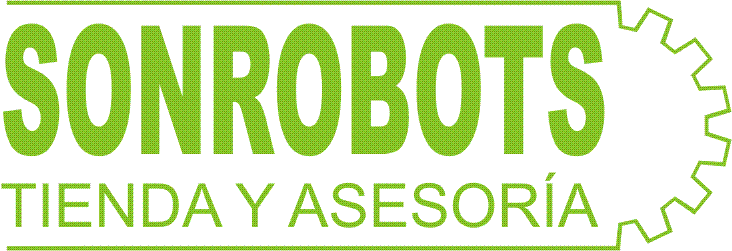
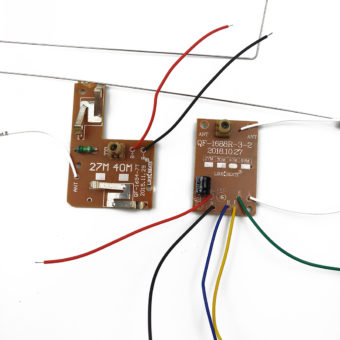
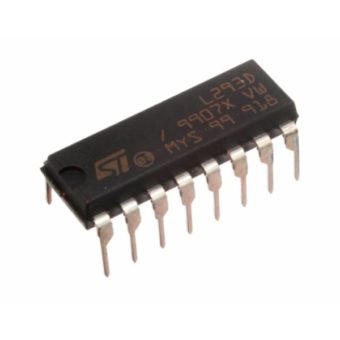

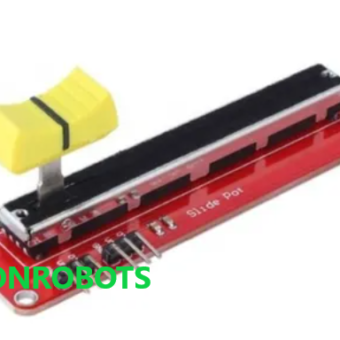
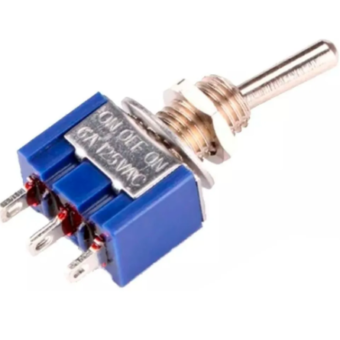
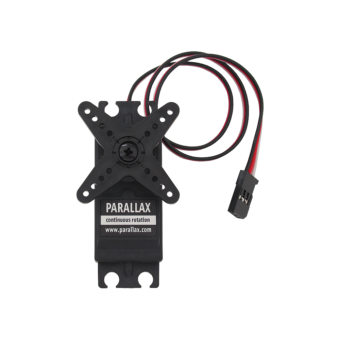
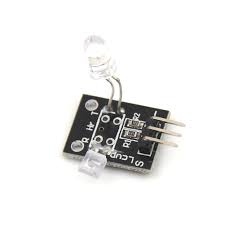

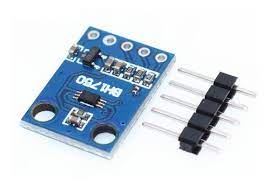

Valoraciones
No hay valoraciones aún.